The moment altitude “hits” often catches trekkers off guard on the Everest trail. One person pauses to steady their breathing, while another wonders why a simple incline feels unexpectedly demanding. Someone else reaches Namche Bazaar and notices a faint headache that wasn’t there an hour earlier. These quiet signals appear differently for everyone, yet they all point to the same reality.
Altitude shapes every step of the journey, and smart acclimatisation decides how well your body adapts in the days ahead. Many trekkers underestimate this shift at first, only to discover how reduced oxygen influences pace, comfort, and overall resilience. The thin air isn’t dramatic, but it steadily pushes your limits until you adjust.
This is where a reliable operator becomes invaluable. Nepal Hiking Team guides watch for subtle changes that most trekkers miss, using proven routines to keep you safe before symptoms escalate. Our approach blends experience, pacing, and close observation, offering reassurance when altitude starts to test you. With the proper support, your journey stays both challenging and deeply rewarding.
Understanding Altitude on the EBC Trail
Altitude affects the body in precise and predictable ways, even when symptoms may seem minor at first. Reduced oxygen makes each breath work harder, and the heart begins to beat faster to compensate. Many trekkers notice shorter breathing cycles, slower recovery after mild effort, and a general sense that movement requires more focus. These changes are regular, yet they deserve careful attention.
The early signs of altitude stress are subtle but essential. A persistent headache, poor sleep, loss of appetite, and mild dizziness can occur during the first significant ascent. These are classic indicators drawn from the AMS awareness posters throughout the Khumbu region and serve as early reminders to slow down and allow the body to adapt. Recognising them early helps prevent more serious issues.
Oxygen saturation declines steadily from Lukla to Everest Base Camp, a pattern confirmed by readings from clinics such as the one in Dingboche. This decline explains why a gradual ascent becomes essential. The Khumbu rewards those who respect its pace, giving the body time to produce the physiological adjustments needed at higher altitudes. A steady, structured approach ensures you stay strong as the air grows thinner.
Oxygen Saturation at Different Altitudes
| Altitude | Location | Oxygen Saturation |
|---|---|---|
| 0 m | Sea level | >97% |
| 1350 m | Kathmandu | >93% |
| 2800 m | Lukla | >90% |
| 3400 m | Namche Bazar | >85% |
| 4000 m | Tengboche | >80% |
| 4400 m | Dingboche | >75% |
| 5000 m | Lobuche | >72% |
| 5300 m | Everest Base Camp | >70% |
Note: At high altitude, readings may be lower than your body's actual oxygen level.
Source: The data come from an oxygen-saturation chart displayed at the clinic in Dingboche.
The Science of Acclimatisation
Once trekkers climb above 3,000 meters, the body begins a quiet but demanding adjustment process. Breathing naturally becomes faster as the lungs try to pull in more oxygen, and the heart works harder to circulate it efficiently. Over several days, the body also increases red blood cell production, allowing oxygen to travel more effectively through the bloodstream. These changes take time, which is why smart acclimatisation sits at the centre of every successful EBC journey.
One of the most effective methods is the “climb high, sleep low” approach. By hiking to a higher point during the day and returning to a lower altitude to rest, the body receives a controlled push before settling into recovery. Trekkers experience this clearly in places like Namche, where the hike to Everest View Hotel provides a healthy stimulus, or in Dingboche with the ascent toward Nangkartsang Peak. These short climbs play an essential role in strengthening adaptation without introducing unnecessary risk.
Pacing is equally essential. Moving too quickly can overwhelm the body before it has time to adjust, and that’s often when symptoms start to appear. A steady, measured pace helps maintain energy levels and prevents altitude stress from building too quickly. Trekkers who adopt this rhythm usually feel more comfortable, sleep better, and enjoy the trail with far greater confidence.
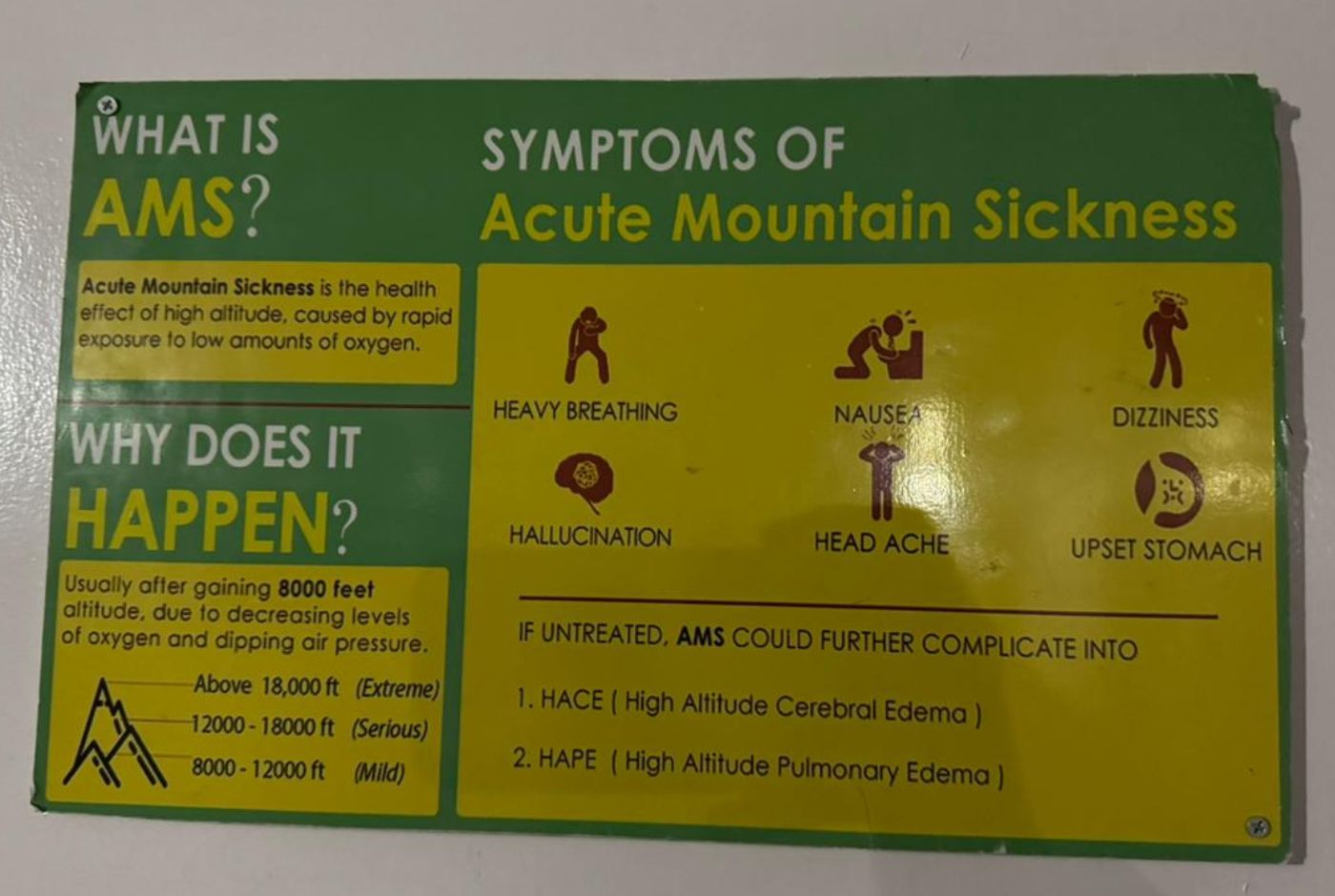
Key Acclimatisation Stops on the EBC Route
Namche Bazaar (3,440 m)
Namche is the first real test of how the body handles altitude, and most trekkers feel small but noticeable changes here. Mild headaches, reduced appetite, or slightly restless sleep are common, and they signal that the body has started adapting. The acclimatisation hike from Namche to Everest View Hotel or onward toward Khumjung gives the lungs and heart a manageable challenge before settling back in town for the night.
During this stop, we closely monitor how each trekker is responding. Hydration, appetite, sleep quality, and oxygen saturation indicate how well someone is adapting. These early checks help us adjust our pace or daily expectations before symptoms worsen.
Dingboche (4,410 m)
By the time trekkers reach Dingboche, the effects of altitude become clearer. Oxygen saturation often drops to the mid-70 percent range, which explains why breathing feels heavier and effort becomes more noticeable. The high hike toward Nangkartsang Peak is a key part of the acclimatisation plan. It provides excellent elevation gain without the pressure of sleeping at higher elevations.
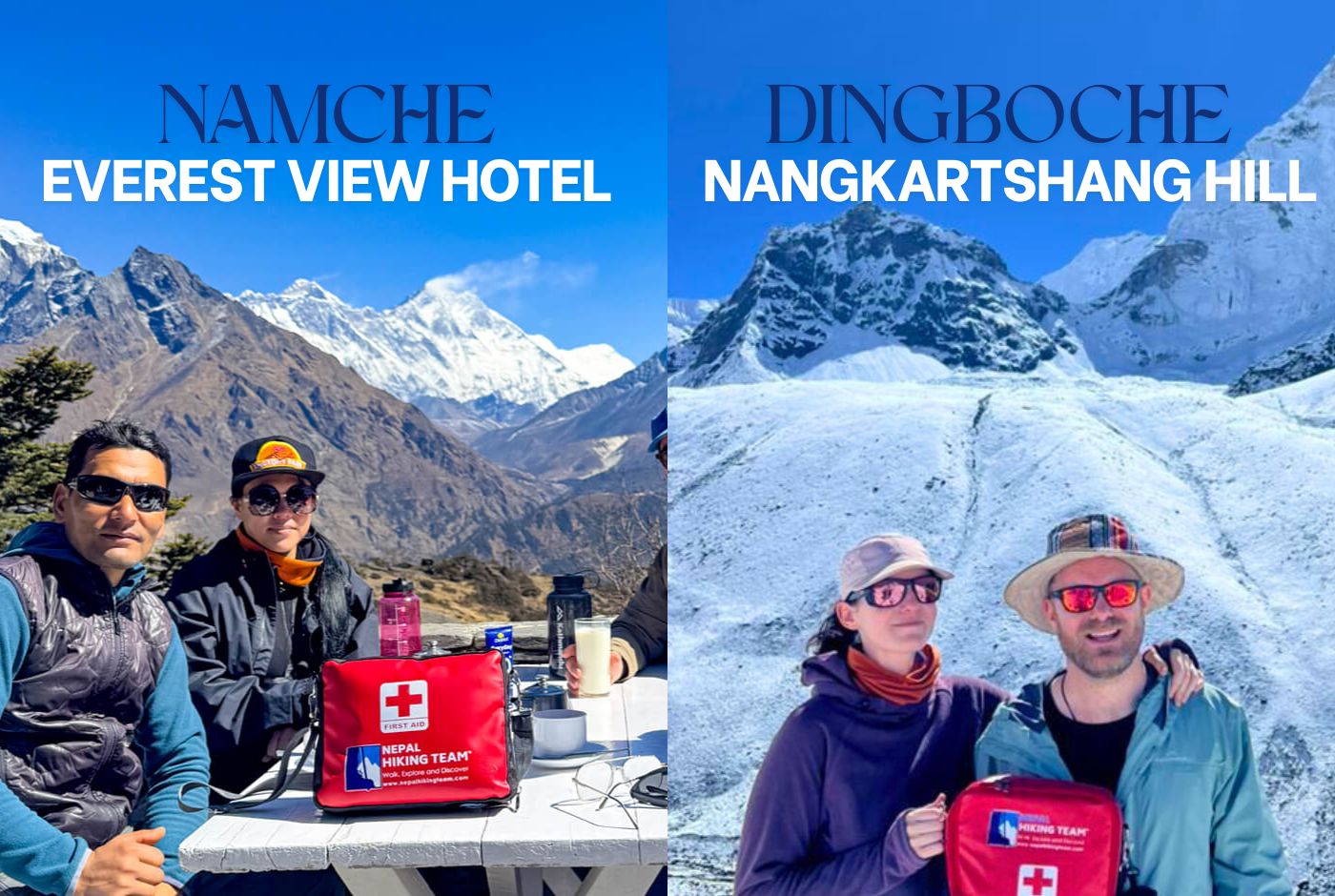
Throughout this section of the trail, we monitor symptoms closely and adjust our pace as needed. Some trekkers benefit from slower ascents, additional rest, or modified expectations for the day’s hike. Those minor adjustments make a significant difference as the air grows thinner.
Safety Protocols Every Trekker Should Know
Altitude brings predictable challenges, and following a few essential protocols makes the journey far safer and far more comfortable. We focus on daily routines that keep the body stable and help identify issues early, before they become serious.
One of the most important habits is our daily health check. We review three key indicators:
- Oxygen saturation
- Pulse rate
- Any symptoms related to altitude
These quick assessments highlight even small changes in how the body is coping. They also help us adjust pacing or rest time immediately when someone needs extra support.
Hydration and nutrition also play a significant role. Drinking consistently, eating well, and avoiding alcohol all help the body adapt to thinner air. Trekkers who stay hydrated and fuelled generally sleep better, recover faster, and maintain steadier energy throughout the climb.
We also follow the widely recommended guideline for altitude gain: keep increases in sleeping elevation moderate and avoid sudden jumps that push the body too quickly. This principle is built directly into the EBC itinerary, which is a significant reason trekkers acclimatise more smoothly.
Proper layering prevents cold stress, which can exacerbate altitude symptoms. Staying warm, especially in the evenings and early mornings, helps the body conserve energy for acclimatisation instead of fighting the cold.
Together, these simple practices form a reliable foundation for safety. They keep the trek steady, predictable, and far more enjoyable as you move deeper into the Khumbu.
Nepal Hiking Team’s Safety Measures
Safety shapes every decision we make on the Everest Base Camp trail. Over the years, we’ve refined a system that enables us to identify altitude-related concerns early and support trekkers before discomfort becomes more serious. Our approach blends training, real-time monitoring, and constant communication on the trail.
We begin with daily oximeter checks and short health assessments. These provide a clear view of how each trekker is adjusting and help us respond quickly to even subtle changes. When someone shows signs of fatigue, poor sleep, or mild AMS symptoms, we slow the pace, adjust the day’s plan, or add extra rest so the body has more time to adapt.
All our guides receive specialised training in recognising and managing altitude-related conditions, including AMS, HAPE, and HACE. They know the difference between mild symptoms that simply need monitoring and warning signs that require decisive action. Our teams carry medical kits, communication tools, and the resources needed to coordinate support if conditions ever escalate.
We tailor pacing to each group and, when necessary, to individual trekkers. Some people acclimatise quickly, while others benefit from a gentler rhythm. Our role is to ensure everyone moves at a speed that keeps them safe and comfortable.
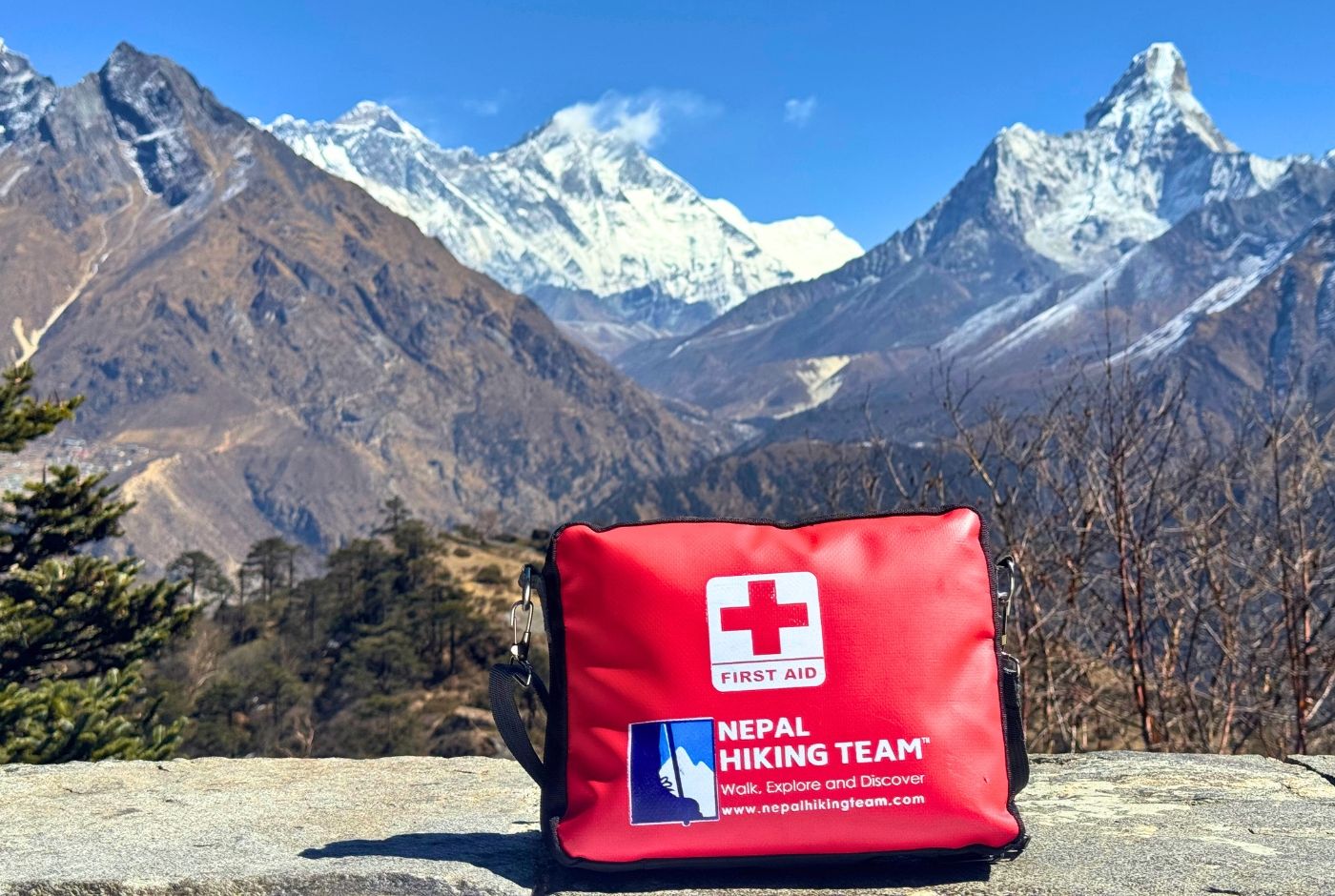
A recent example shows how valuable this approach can be. One trekker began experiencing mild dizziness near Dingboche. Their oxygen saturation had dropped more than expected, and our guide caught the change during a routine check. We slowed the afternoon hike, encouraged rest and hydration, and reassessed later that evening. The symptoms settled, and the trek continued the next day. That small, early intervention prevented a much more difficult situation further up.
These measures help us maintain a safe environment while keeping the trek rewarding, steady, and enjoyable for every team member.
Recognising Altitude-Related Conditions
Altitude affects every trekker differently, and understanding the key conditions helps you react quickly when something feels wrong. We monitor symptoms at every elevation because early recognition helps keep the journey safe and manageable.
Acute Mountain Sickness (AMS)
AMS is the most common altitude reaction, and its early signs should never be ignored. Symptoms often include insomnia, nausea, loss of appetite, fatigue, and light dizziness. These are the same indicators highlighted in AMS awareness posters throughout the Khumbu region. When these symptoms appear, the priority is to pause, rest, and monitor carefully. Most mild cases improve with hydration, slower pacing, and proper sleep. Continuing upward too soon can increase the risk of more serious complications.
High Altitude Pulmonary Edema (HAPE)
HAPE is a serious condition that requires immediate attention. Trekkers may experience chest tightness, persistent cough, breathlessness even at rest, or frothy sputum. These signs indicate that the lungs are struggling to adapt to altitude. When this occurs, descent becomes mandatory. No rest day or gradual adjustment can replace the need to move to lower ground.
High Altitude Cerebral Edema (HACE)
HACE is the most dangerous altitude condition and requires urgent evacuation. Symptoms include disorientation, loss of coordination, memory problems, and unusual or confused behaviour. These signs indicate that the brain is being affected by altitude, and fast action is essential. Our guides step in immediately to ensure the trekker receives the correct support.
When any of these conditions appear, we manage the decisions and logistics so trekkers are never left to handle the situation alone. Our guides coordinate rest, descent, or evacuation depending on what is needed, and we stay with you through every step until you are safe.
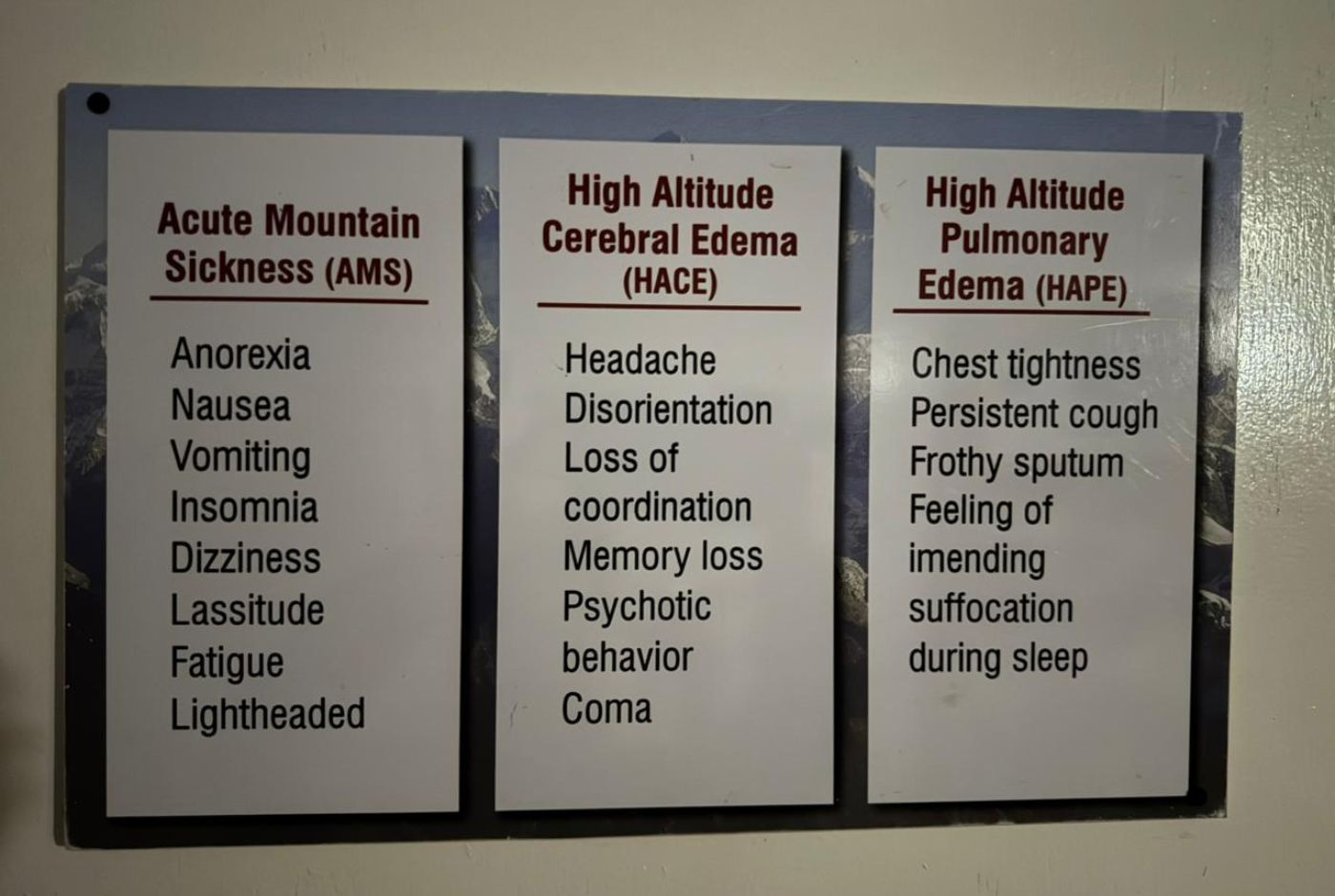
Evacuation and Emergency Support
Emergency support in the Khumbu region follows a well-established system that allows trekkers to receive help quickly when altitude or injury becomes a concern. Helicopter evacuation is the primary transport method because it reaches remote villages and high-altitude locations much faster than ground options. When a situation requires immediate action, we coordinate the call, manage communication with the helicopter team, and prepare the trekker for transport.
Insurance plays an important role here. Trekkers need a policy that clearly covers high-altitude evacuation, including flights above 5,000 meters. This ensures rescue teams can respond without delay and the trekker receives the care they need promptly.
Communication on the trail uses several tools to ensure help is never far away. Mobile networks cover much of the route, and satellite phones fill the gaps in remote areas. This combination allows us to contact rescue teams, medical support, or our operations staff even in severe weather or limited visibility.
When an evacuation becomes necessary, we handle the process from start to finish. Trekkers focus on staying calm while we manage coordination, communication, and the steps needed to safely transport them to a lower altitude or medical care.
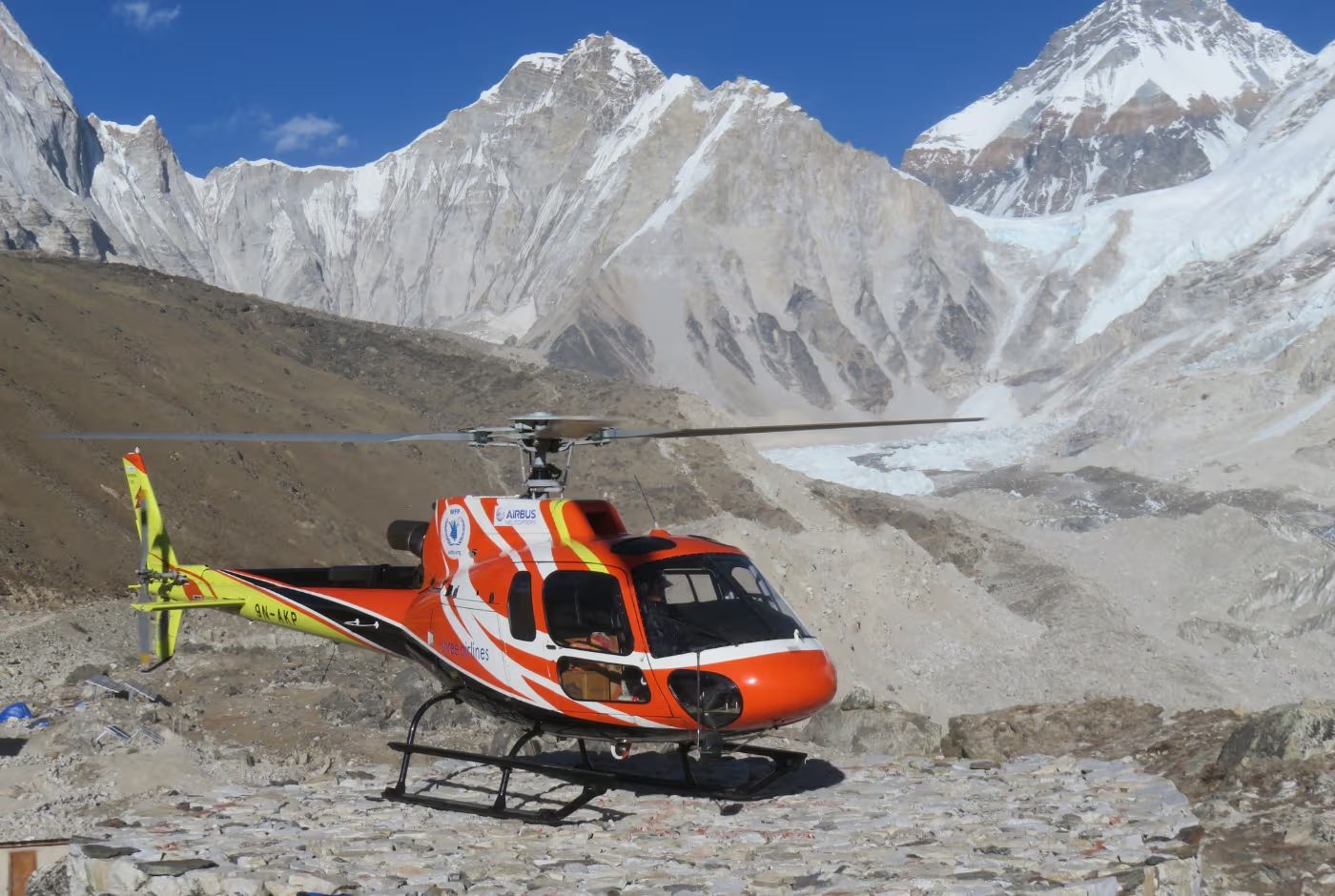
Practical Tips for Trekkers
Good preparation makes the Everest Base Camp journey far more comfortable and gives your body the best chance to acclimatise smoothly. Fitness helps, but simple habits and the right mindset have an even greater impact as altitude builds.
Before the trek begins, focus on consistent training that improves stamina and leg strength. Regular walking, light hikes, and steady cardio sessions prepare your body for long days on the trail. Hydration habits are equally valuable. Trekkers who drink well before arriving in Nepal often settle into the altitude more comfortably.
Packing the right items also supports the overall experience. Warm layers, a reliable water bottle or hydration system, sun protection, and essential medication keep you comfortable during the constant shifts in weather and altitude. These small choices protect your energy and help you adapt from day to day.
During the trek, the most essential guideline is to listen to both your guide and your body. Slowing down when needed, speaking up when symptoms appear, and resting properly each evening all contribute to a safer and more enjoyable experience. When you follow these simple habits, the trail becomes more rewarding, and the journey feels far more achievable.
Additional Safety Note: Hot Shower Limit in EBC Trek
Many lodges throughout the Everest Base Camp Trek use gas geysers for hot showers. At high altitude, the combination of low oxygen and gas heaters can increase the risk of carbon monoxide exposure. This can lead to symptoms such as dizziness, fainting, nausea, or, in extreme cases, life-threatening complications.
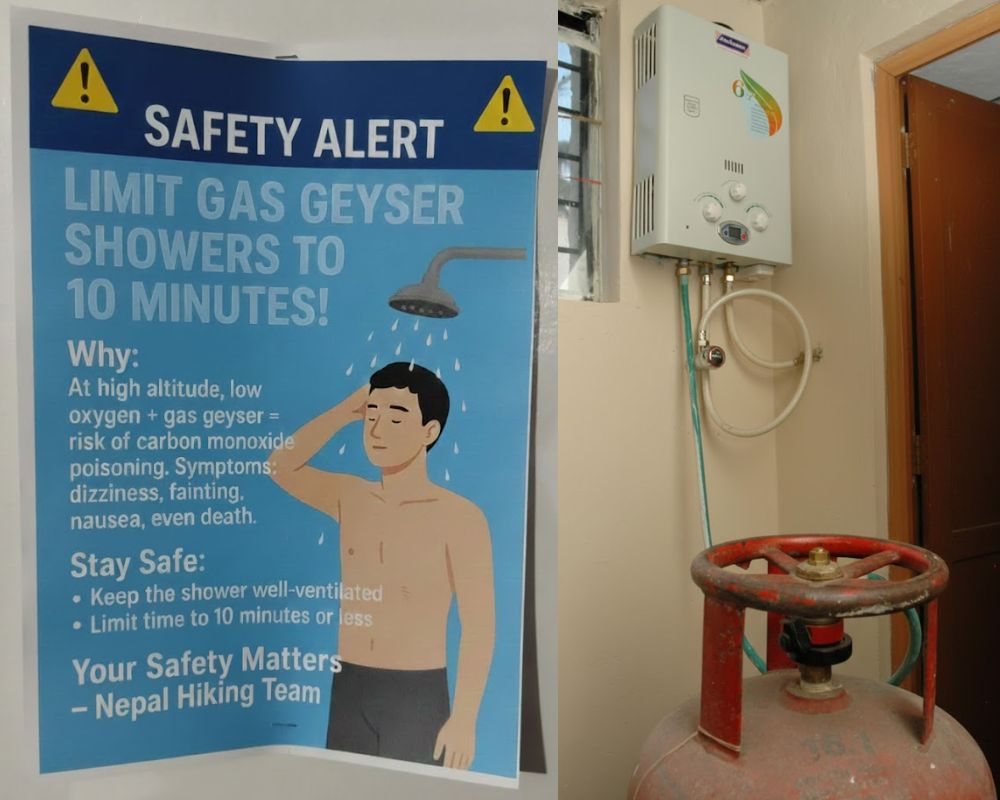
To stay safe, the clinic recommends two simple guidelines:
- Keep the shower area well ventilated
- Limit hot showers to ten minutes or less.
We encourage all trekkers to follow this advice. It is a small precaution that protects your well-being and ensures you stay healthy for the rest of the journey. Your comfort matters, but your safety always comes first.
Concluding Notes from Nepal Hiking Team
Acclimatisation quietly shapes every successful Everest Base Camp trek. It works in the background from the first ascent out of Lukla, guiding your body's breathing, movement, and adaptation to the thin Himalayan air. When managed well, it protects your energy and allows you to enjoy each day with steady confidence. When overlooked, it can turn a promising journey into a difficult challenge long before you reach the higher villages.
Choosing an operator that prioritises safety makes all the difference. Our approach at Nepal Hiking Team focuses on careful pacing, daily monitoring, and the experience needed to support trekkers at altitude. We understand how the environment affects the body and guide you through these changes with attention and care.
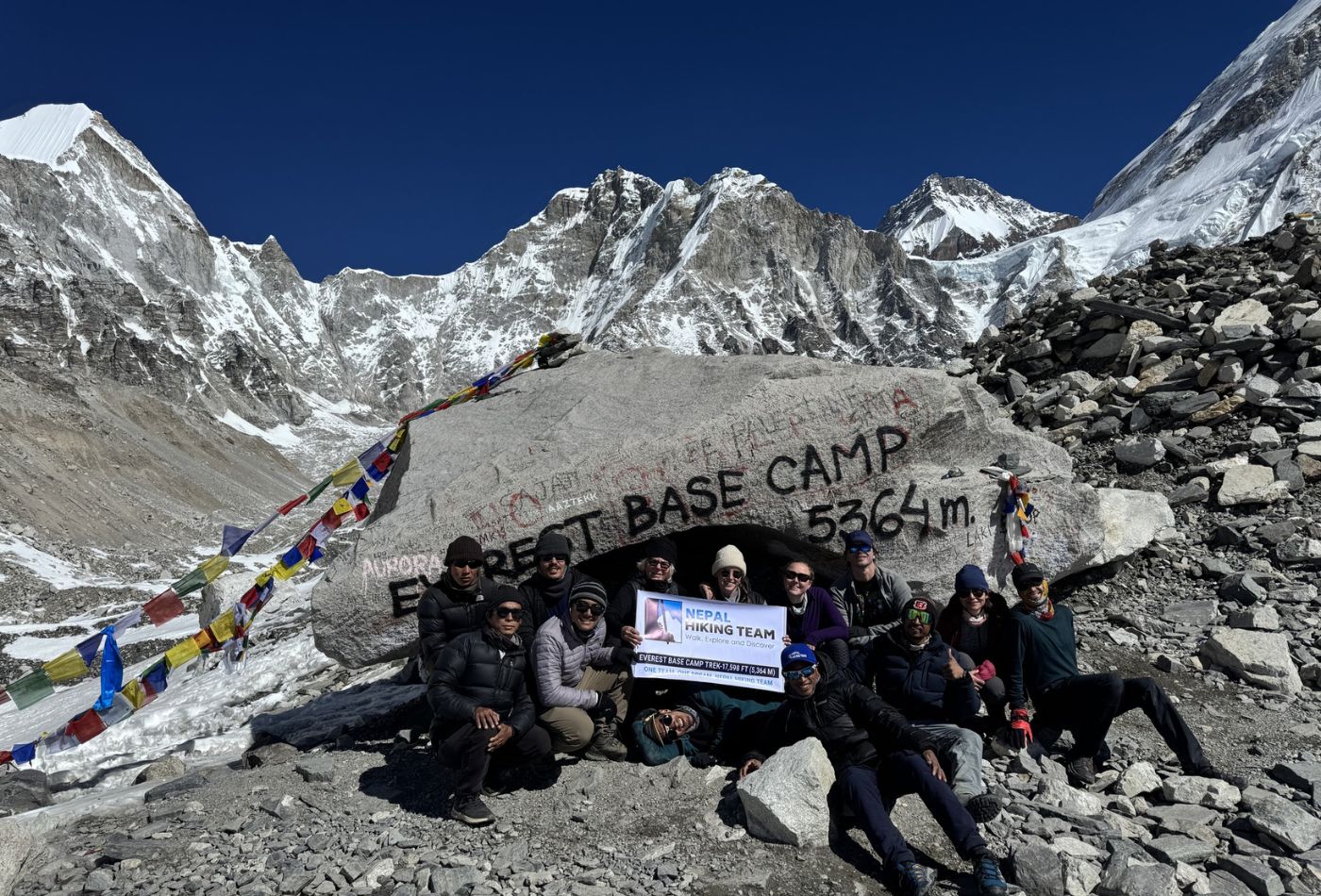
With the proper preparation and the right team beside you, the Himalaya becomes a place you can explore with trust and enthusiasm. Every step brings new views, new stories, and a sense of achievement that grows with the altitude. When you trek with confidence and proper support, the journey to Everest Base Camp becomes not only possible but deeply rewarding.
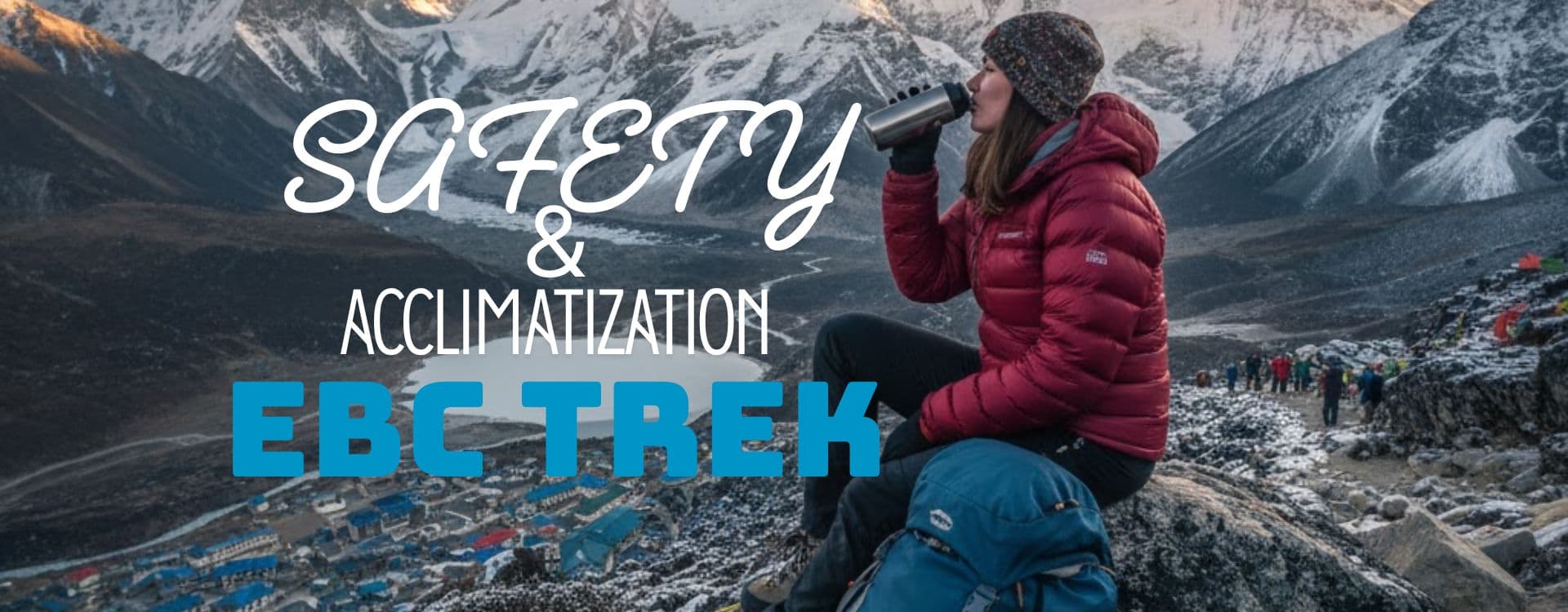
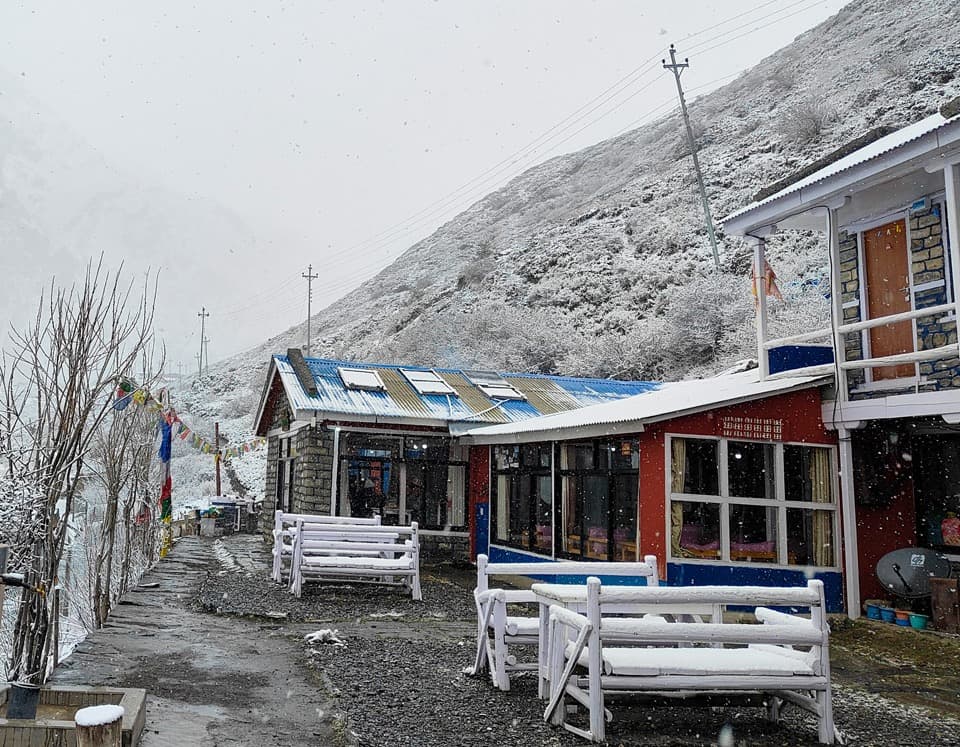
Post a Comment